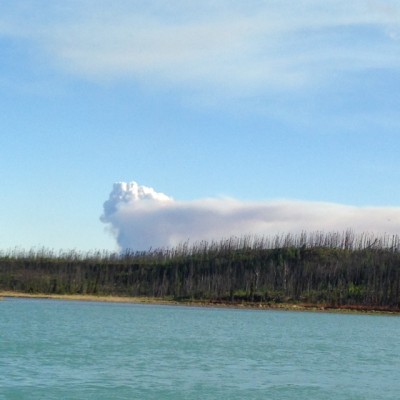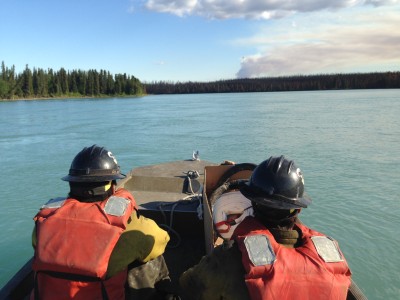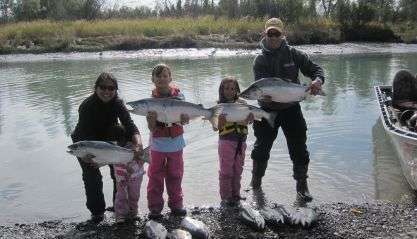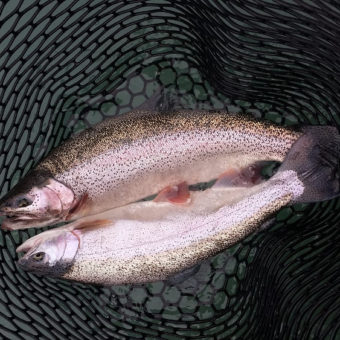 I was fishing the Kasilof in late May with friends and had just landed a really nice hatchery king salmon when my cell phone rang. It was a guide friend who wanted to know if I was interested in helping out with the fire by transporting firefighters by boat along the river. With the Kenai closed to king fishing and with only a handful of trips on the Kasilof in the next week or so, I figured spending a couple days on the fire would be interesting if nothing else. I said sure and five minutes later he called back and said “bring your boat to in for an inspection, they need you ASAP.” With that we reeled in our lines and headed for the take out.
I was fishing the Kasilof in late May with friends and had just landed a really nice hatchery king salmon when my cell phone rang. It was a guide friend who wanted to know if I was interested in helping out with the fire by transporting firefighters by boat along the river. With the Kenai closed to king fishing and with only a handful of trips on the Kasilof in the next week or so, I figured spending a couple days on the fire would be interesting if nothing else. I said sure and five minutes later he called back and said “bring your boat to in for an inspection, they need you ASAP.” With that we reeled in our lines and headed for the take out.
For the next two weeks I helped deploy fire crews by river boat along the Kenai River just upriver from Kenai Keys or the confluence of the Kiley River. This was the area where the fire had jumped from the south to north side of the river and while most of the more serious flames had passed through there were a number of hot spots still burning up and down this section of river. We spent several days taking in fire crews to mop up these small spot fires.

 Overall the fire ended up burning some 195,000 acres mostly contained to the Kenai National Wildlife Refuge between the Kenai and Kasilof River and the Kenai Mountain Range. It ended up being the largest fire in the entire United States for the summer of 2014 and miraculously no permanent structures (other than few recreational cabins) were lost and no one was killed or seriously injured.
Overall the fire ended up burning some 195,000 acres mostly contained to the Kenai National Wildlife Refuge between the Kenai and Kasilof River and the Kenai Mountain Range. It ended up being the largest fire in the entire United States for the summer of 2014 and miraculously no permanent structures (other than few recreational cabins) were lost and no one was killed or seriously injured.
The Kenai River is noticeably burned on both sides from the Kenai Keys area all the way up to a few miles below Skilak Lake. Stands of ironic fireweed were in full bloom this summer below miles of scorched spruce providing a beautiful contrast and an example of how fast the forest rebuilds.

















































